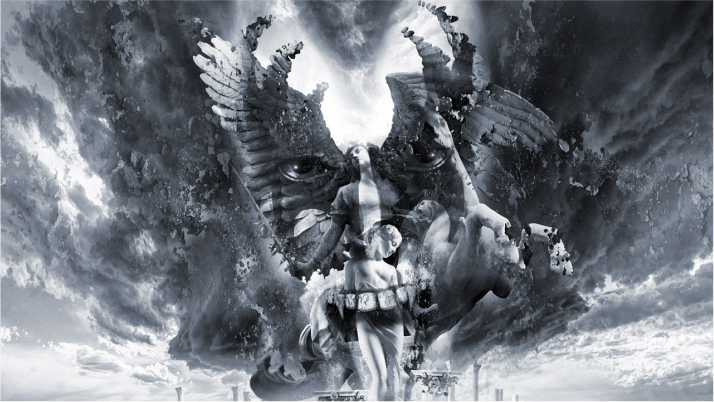
What happens when centuries-old traditions collide with modern science in the heart of the Vatican? It is something that one cannot truly expect as what happened in the novel, Angels and Demons, by Dan Brown. Science and religion, historically, have driven opposite beliefs and principles toward the way of living. Both have become sufficient and integral to people as they navigate the “why” and “how” of life as seen through human evolution. Hence, this modern mystery and thriller novel and the well-known adopted movie showed a fictionalized yet sophisticated and interesting perspective toward the century-old clash or difference toward both aspects of science and religion. It illustrated the main themes of science vs religion over control and influence toward people by the inventions and principles they abide by. Alongside that, it also emphasizes the historical symbolism, particularly within the catholic church, such as the relevance of specific statues, churches, and even the role of the Vatican City’s main setting. The characters within the story have shown different lenses of how the two main principles can influence or use the authority bestowed upon them, either as direct servants of the Church or ambitious scientists or even believers of both. Therefore, themes of power, symbolism, acceptance, and heavy themes of betrayal can be seen in the story. By intertwining historical and religious traditions with elements of Dan Brown’s fascination with symbology, Angels and Demons captivates readers with a gripping tale that feels both authentic and provocative.
Historical Context
The story revolves around the clash between religion and science. Robert Langdon, a Harvard professor and symbologist, is called to investigate the mysterious death of Leonardo Vetra, a scientist at CERN in Switzerland, who was murdered under circumstances tied to an ancient group called the Illuminati. The investigation reveals that a dangerous particle called antimatter, stolen from CERN, is hidden in Vatican City and poses a deadly threat. As the Vatican mourns the death of the Pope and prepares for a conclave to elect a new leader, an assassin working for the Illuminati kidnaps four cardinals, referred to as the “Four Pillars of the Church.” These kidnappings and planned murders aim to disrupt the Church. Langdon, working with Swiss security and others, races against time to save the cardinals and stop the antimatter from destroying the Vatican. The story climaxes with acts of heroism, including a dramatic sacrifice to remove the antimatter. However, it is ultimately revealed that the crisis was orchestrated by Camerlengo, a high-ranking Vatican official, in a plot to gain power. In the end, the betrayal is uncovered, and a new Pope is chosen, restoring order to the Church.
The first historical reference in the story is the Illuminati. In the story, it was illustrated that this was a group of men in Rome who fought back against the Church. Before being known in modern times as an Anti-Christ or Anti-Christianity group, it was emphasized as Robert Langdon stated, “Some of Italy’s most enlightened men–physicists, mathematicians, astronomers–began meeting secretly to share their concerns about the church’s inaccurate meanings.” It was stated that many of the members at that time specifically in the 1500s wanted to resort to violence against the church’s tyranny but their most revered member persuaded them against it. This individual in particular was Galileo Galilei. However, relating its portrayal to real life it was extremely fictionalized. Brown was able to incorporate the initial identity that this brotherhood was formed by the so-called “enlightened”, including intellectuals, freethinkers, and secularists. However, this intellectual was not like the story had a significant relation to science like the scientist Galileo Galilei, but the founder of this group was a professor and a philosopher named Adam Weishaupt. He was not a scientist but had a similar situation to the role of Galileo in the story. Weishaupt became deeply anti-clerical under the issuing of the papal brief Dominus ac Redemptor of Pope Clement XIV in 1773. This led to him promoting the spread of the “Enlightenment”, an intellectual and philosophical movement that promoted ideas based on the pursuit of knowledge obtained employing reason and the evidence of the senses, human happiness, fraternity, liberty, toleration, and the separation of church and state (Milligan, 2021). Historically, the Illuminati or Bavarian Illuminati was not barbaric or intentionally anti-religious in the way that was portrayed in Angels and Demons. Instead of being explicitly anti-religion, their opposition was directed toward institutional control and dogma, rather than faith itself. However, it was factual that Galileo was a physicist, mathematician, astronomer, and philosopher who was persecuted by the 17th-century church for believing the world revolved around the sun. So, that is why at the peak of its exposure upon its release it received harsh criticism because of numerous factual errors based on real-life history. However, gaining perspective of Brown’s writings, he utilized this ancient history to make similar backgrounds yet create their own identity following the story he wanted to present.
The religious event of the conclave was discussed and happened in the story. This was highlighted as the main event conducted after the mourning period of the death of the pope. This was a tradition held by the Vatican law with the College of Cardinals to gather for the commencement and voting for the best candidate for the papal throne. This historical reference was the most accurate Brown did in the story. Referencing his work with the original procedure and mechanism of the religious tradition, it was acclaimed that most of it was factual. However, he integrated certain changes to the authority of certain individuals such as the Camerlengo which had gained attention from critics as well. However, the procedure, power, authority, detailed description of religious practice, and relevance to the story were most authentic and historically accurate. This specific event in the story was one of the climax and highlighted parts of the story. Brown integrated themes of trust, faith, and betrayal all at the same time with this setting at hand. While Brown’s depiction of the Illuminati draws heavily on myths, his vivid description of the conclave adds a layer of authenticity, immersing readers in a setting rooted in tradition.
Within these examples, it is evident that Brown’s work in this novel was heavily dramatized. Despite the numerous historical references from the formation of the Illuminati to the conclave, he added his twist and various modifications to incorporate his style and aim to exemplify modern thriller and mystery at its corner. Analyzing his integration towards fictionalizing most of the historical context, shows his creativity and intricate style of writing. Looking deeply at the modifications made, there still exist similarities within the original context. However, considering the importance of careful and proper referencing of historical traditions particularly to religious ones, his work is deemed for numerous critiques. Literary context on religion has been strict to portrayals of historically relevant events, may it be for fiction or nonfiction. But, disregarding the strict constraints to this, Brown was able to exemplify historical context on a dramatized yet interesting and exploring lens.
Biographical Influence
Dan Brown’s novels were known to circulate in between genres of action that blend scientific and religious influence. From his book Digital Fortress, Da Vinci Code, and to his most recently published novel entitled, Wild Symphony, his fascination with symbolism, and mystery had long been consistent throughout his career. His interest in such an approach might have been influenced by his father, a mathematics teacher, and a church organist. He developed this immense fascination with the paradoxical interplay between science and religion as he was raised in the prep school his father taught. These eventually are the prime reasons why it became the backdrop for his books. Little to no information about his life is available in the modern media, but his works are enough evidence that the environment he grew up in had resulted in his cultivation of a great author of the said genres.
In connection to the novel, this influence is observed as he balances between the principles of faith and skepticism in the story. Robert Langdon’s character was the prime example of this balance. His being an academic to symbolism that exposed himself to both sides of religion and science had kept him to remain focused and unbiased in each knowledge. His very encounter with the conflict regarding the reformation of an ancient brotherhood or organization and his reaction towards it first showed half of skepticism. But, this was later amended as the integrated character of an academic to nurture the pursuit of knowledge to fact-check whether such information is real. As it becomes eventually in the middle of the story, faith is strengthened, not in the religious sense, but to the existing knowledge that the discovery might be and had become relevant at some time in the past. This concept was later at the end evident as a learning lesson for Langdon after the tragedy within the Vatican was diminished. He had an enlightenment toward science and religion. His pursuit for knowledge and academic development didn’t change throughout the events; rather, it helped him gain balance within the faith and skepticism he had in both aspects.
Impact of Historical-Biographical Elements
In conclusion, the blending of historical facts and storytelling elements can intrigue and improve the engagement of readers. Applying an author’s personal style and even biographical influence to the story can create a cultivating masterpiece. Brown’s integration of both illustrated noble appeals to both history and thriller enthusiasts. However, it is crucial to take into account the control over historical liberties upon writing a fictionalized story with heavy traditional or cultural references as it may be subjected to reception by scholars and religious institutions as what had occurred with Brown in this story. From an academic perspective, it may diminish credibility at a certain point as it may be perceived as the correct knowledge or origin to those readers who are not aware or familiar with the context at hand. Despite integrating the book about its factual elements, some readers may become confused about which are truly accurate as some stories portray fictionalized events with intricate and delicate details that are somewhat similar to the original ones. Emulating Brown’s technique can be challenging but by integrating proper references and emphasizing its fictional focus, it is no harm to write something similar to the genre and structure of a story. By weaving his fascinations with history’s enigmas into a modern dilemma, Dan Brown ensures that Angels and Demons remains a compelling intersection of fact and fiction.
